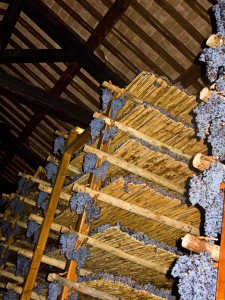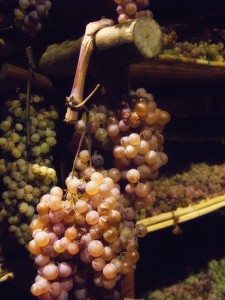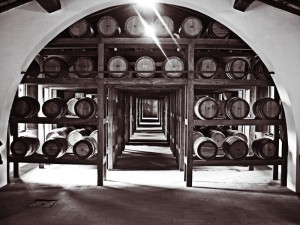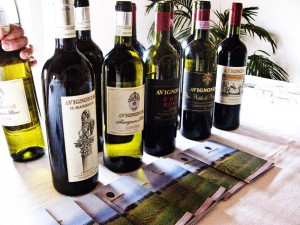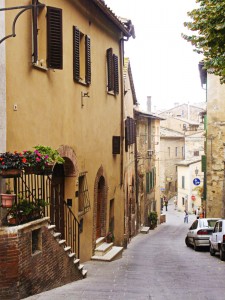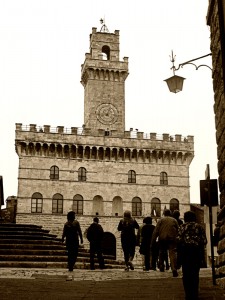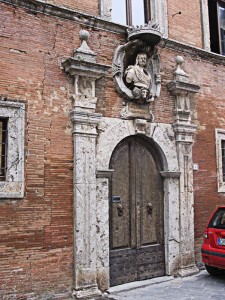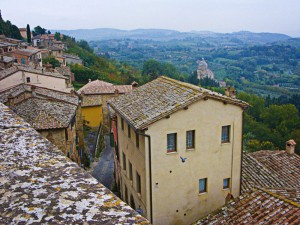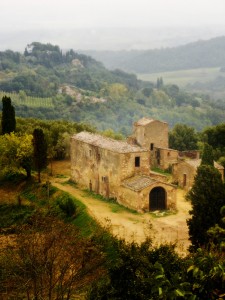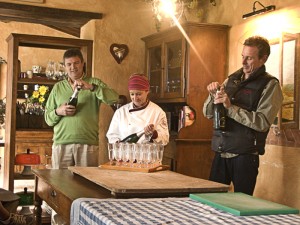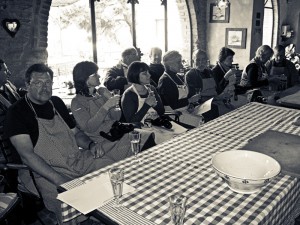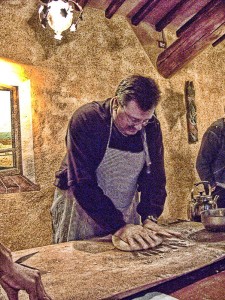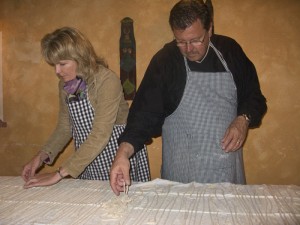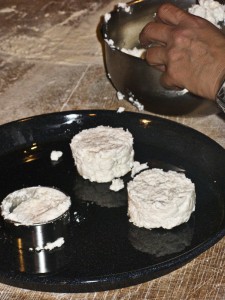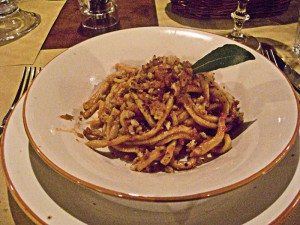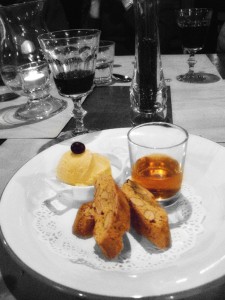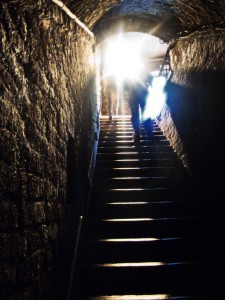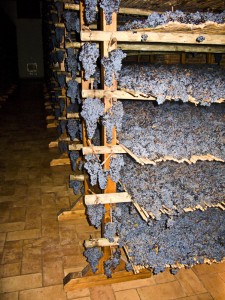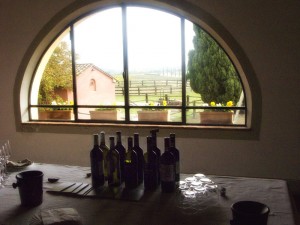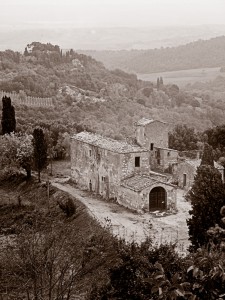Did you miss a previous day? Click here to read Day One, Day Two or Day Three.
Our first destination today was to the Avignonesi Winery, one of the largest in the region with over 550 acres. Our guide lead us on a very comprehensive tour which ended, happily, with a tasting of five of their popular wines. They are best known for their Vino Nobile di Montepulciano. They also produce a tiny amount of Vin Santo – a hard-to-find, expensive dessert wine considered among the best of its class. It is aged for eight to ten years. We did not get to sample this!
I have visited Gundlach Bundschu Winery in Sonoma, “the oldest winery in California” that dates back to 1858. In fact, our daughter held her wedding dinner in their wine cave. Well, the wine caves at Avignonesi trace their roots back to the 16th century! The ancient curved ceilings are thick with black mold which in fact contains the penicillin mold. Over the centuries, they determined that the mold was actually beneficial in keeping bacterial contamination at bay.
We visited Tuscany at the perfect time for the grape harvest. The drying room bamboo shelves were stacked to the ceiling with red and white grapes. Ummm… can you imagine the smell? We were ready to taste some wine! Afterwards, we had the opportunity to visit their gift shop and purchase wine, cheese, and olive oil. They also offered olive oil tasting.
On the short bus ride up to the old walled city of Montepulciano, our guide Francesco talked about olive oil production. The most pure way to derive “extra virgin olive oil” is to pile the harvested olives in a large bin and let the weight of the olives press out the oil. (Very few producers do it this way, but the chef at our cooking school for the evening does it this way and we were able to buy this precious oil from her.) Almost all estates/farms have their own olive grove and they bring their olives to the local olive oil mill at harvest time to bottle their own oil.
Usually, the olives are lightly pressed and the first oil is called the “extra virgin” olive oil. Then they are pressed (harder) a second time and this results in “virgin” olive oil. Lastly, they press the remaining pulp very tightly and “olive oil” is the final product. We were told that most of the olive oil we buy cheaply in this country is produced from the last press and is mistakenly called “extra virgin olive oil”. If you can get a quart of olive oil for $10 to $12 dollars, it is likely NOT extra virgin. They can call it “extra virgin” if it meets a certain acidity level. So, some companies will acidify the olive oil to meet this standard and label it this way.
Lunch was on our own in Montepulciano and I opted for a quick bowl of riboletta, as I wanted more time to wander and photograph. We then met in the town square and walked down (always down!) to our bus. Time for cooking lesson number four, held at a gorgeous country B&B.
Benedetta and her mama have a cooking school on the premises. This was more of a classroom setting. First, we had a champagne toast to commemorate the 15th year of Classic Journeys. Then we proceeded to chop, dice, knead, roll, and cook the elaborate final cooking class dinner. Wow – this was really special. We learned to make: hand rolled pasta called “pici” served with a classic vegetable ragout sauce, a ricotta flan with a vegetable and breadcrumb topping, pork tenderloin wrapped in Italian “bacon” and topped with a garlic, olive, and breadcrumb combo, potatoes, and almond biscotti, homemade ice cream, and dessert wine.
Making the pici was so much fun! We started with a gooey mass of pasta ingredients dumped on the table: flour, eggs, olive oil, salt, and water. Somehow that mess turns into a giant lump of pasta (to feed 18 people!). It seemed like Mike kneaded it forever. Then the fun part: rolling it out very thin and using a special rolling pin with grooves to cut all the individual strands. Then we loaded a long table top with about 9 feet of pasta, which had to dry for one hour. While it was drying, we observed the preparation of all the sauces. We had to take turns in the 8×8 foot kitchen. Benedetta kept bellowing “MAMA!” at the top of her lungs when she needed something – too funny!
Finally, about FOUR HOURS LATER, it was time to eat (9:30 p.m.) Boy – we were all starving! By now, we were used to course after course being delivered to the table and had learned to “pace ourselves”. To top off a memorable meal, Luciano stood up and began to sing Italian songs – some slightly familiar (?) that he expected us to join in on! (the only line I knew was “when the moon hits your eye like a big pizza pie, that’s amore”.) Then the energetic Benedetta (all 4’10” of her) burst forth from the kitchen to join him. What a fabulous meal and setting! We didn’t get back to our hotel until 11 p.m. and all fell into our beds with equal parts exhaustion and food coma.


